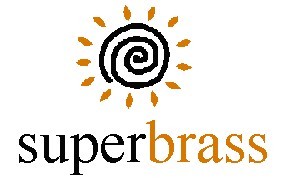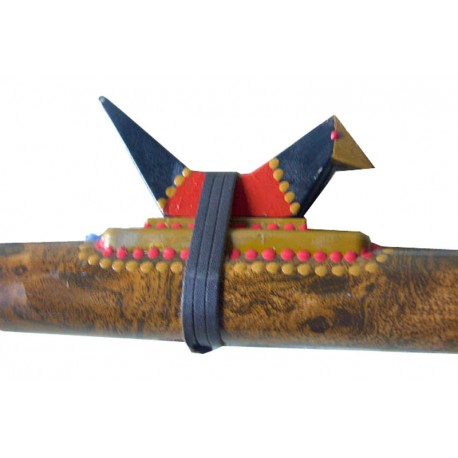No products
Flutes & Clarinets
New products
-

Seth vs Osiris, Ancient Egypt Metallic Original Art Solid Brass Collectible Mens' Watch
40 mm solid brass casing in gold finish with stainless steel back...
$ 121.44 -

Chinese Traditional Good Luck Dragon Art Gold Medallion Solid Brass Men's Watch
40 mm solid brass casing in gold finish with stainless steel back...
$ 129.59 -

English Colours Fire-Breathing Dragon Ancient Parchment Fantasy Art Brass Watch
40 mm solid brass casing in gold finish with stainless steel back...
$ 137.74 -

Ancient Blue Fire-Breathing Dragon Parchment Art Solid Brass Mens Dress Watch
40 mm solid brass casing in gold finish with stainless steel back...
$ 137.74 -

Golden Dragon Metallic Art Solid Brass Collectible Men's Fantasy Good Luck Watch
40 mm solid brass casing in gold finish with stainless steel back...
$ 121.44
Native American Bird Flute Warbler in D. Beautiful Sound & Construction
MUS-035
New product
Beautiful fiberglass flute in D# with a lovely sweet sound.
More info
The Native American flute is an end-blown flute fashioned either from cane (such as river cane), hardwood (such as walnut), or softwood (such as cedar). Theoretically, the instrument's archetype is the Anasazi flute developed by the Ancient Pueblo Peoples of Oasisamerica. The Anasazi flute seems to derive from Mesoamerican flute designs.
History
There are many stories about how different Native American peoples invented the flute. In one tale, woodpeckers pecked holes in hollow branches while searching for termites; when the wind blew along the holes, people nearby heard its music.
The oldest Extant Native American flute made of wood was collected by the Italian adventurer Giacomo Costantino Beltrami in 1823 on his search for the headwaters of the Mississippi River. It is now in the collection of the Museo Civico di Scienze Naturali in Bergamo, Italy.
Earlier flutes of river cane have been found, the earliest being a flute in the collection of the Museum Collections of the University of Arkansas, Fayetteville. It was recovered in about 1931 by Samuel C. Dellinger and recently identified as a flute by James A. Rees, Jr. of the Arkansas Archeological Society. The artifact is known colloquially as “The Breckenridge Flute” and is likely to date in the range 750-1350 CE.
Construction
The Native American flute is the earliest flute recognized to have two air chambers. An internal wall (sometimes called a plug) inside the instrument partitions the two chambers: The slow air chamber (also called the compression chamber or mouth chamber) and the sound chamber (otherwise known as the pipe body, playing chamber, resonating chamber, tone chamber, or variable tube). The sound chamber contains the sound hole (or distal mouth opening or true sound hole) and the tone holes (finger holes).
The slow air chamber can serve as a secondary resonator, which can give some flutes a distinctive sound. The two chambers are acoustically connected by an narrow channel, called a flue, that is formed by the top of the plug and the bottom of a removable block (or "bird", "fetish", "saddle", or "totem").
The "traditional" Native American flute was constructed using measurements based on the body - the length of the flute would be the distance from inside of the elbow to tip of the index finger. The length of the top air chamber, as well as the distance between the whistle and first hole, would be one fist-width. The distance between individual holes would be one thumb-width, and the distance from the last hole to the end would generally be one fist-width.
Plains flute
In a plains flute, a spacer is added or a channel is carved into the block itself to form a thin, flat air stream for the whistle hole (or "window"). All flutes that have blocks on the top of the flute are of the plains style regardless if the flue is carved in the bottom of the block or in the top of the flute.
Woodlands flute
Woodland flutes are made of reed and are more like whistles. They have no block on the top of the flute.
Drone flute
The drone flute, which is of Aztec origin, comprises two or more flutes built together. Generally, the drone chamber plays a fixed note which the other flute can play against in harmony. The drone may also change octaves as it resonates with the melody played on the adjacent flute.
Materials
Native American flutes were made from bones at first, now they are made from various materials. Juniper, Redwood and Cedar are popular, as they provide a nice aroma. The soft woods are generally preferred by most flute players, because of the softer tones produced by the wood. Other harder woods such as walnut and cherry are appreciated for the clear, crisp, richness of sound that they can produce. Bamboo and river cane can contain either soft or clear, crisp tones depending on size and species.
Although traditionally flutes would be made from river cane, bamboo or a local wood, more exotic rain forest woods or even plastics are now used. Today flute makers use many exotic materials too, like ceramic and glass.
The Warble
A distinctive sound of some Native American flutes, particularly traditional flutes, is called the warble (or warbling). The warble sounds as if the flute is vacillating back and forth between different notes. However, it is actually the sound of different harmonic components of same note coming into dominance at different times.
The warble can be approximated by use of vibrato techniques. The phase shift that occurs between different harmonics can be observed on a spectrograph of the sound of a warbling flute.
Music
 | |
 | |
Modern Native American flutes are generally tuned to a variation of the minor pentatonic scale, which gives the instrument its distinctive plaintive sound. Recently some makers have begun experimenting with different scales, giving players new melodic options. Also, modern flutes are generally tuned in concert keys (such as A or D) so that they can be easily played with other instruments. The root keys of modern Native American flutes span a range of about three and a half octaves, from C2 to A5.
Fingering
Native American flutes typically have either five or six holes, but an instrument may have zero to seven, including a thumb hole. Various makers employ different scales and fingerings for their flutes.
Revival
During the late 1960s, the United States saw a roots revival of the flute, with a new wave of flautists and artisans such as Doc Tate Nevaquaya, John Rainer, Jr., Sky Walkinstik Man Alone, andCarl Running Deer. Mary Youngblood won two Grammy Awards in the Native American Music category for her flute music. She remains the only Native American flautist to be distinguished in this way, as the National Academy of Recording Arts and Sciences retired the category in 2011. Today, Native American style flutes are being played and recognized by many different peoples and cultures around the world.
Flautists and composers
Notable and award winning Native American flautists include: R. Carlos Nakai, Joseph Firecrow, Joseph RiverWind, Charles Littleleaf, David R. Maracle, Kevin Locke, Joanne Shenandoah,Robert Mirabal, Douglas Spotted Eagle, Timothy Archambault, Troy De Roche, Jeff Ball (Jeff Ball is non-Native), Douglas Blue Feather, Jay Red Eagle, Robert "Tree" Cody, David Atlas, Arvel Bird, John Two-Hawks (John Two-Hawks is non-Native), Mary Youngblood, Michael Searching Bear.
A few classical composers have written for the Native American flute, including James DeMars, David Yeagley, Frank Martinez, Brent Michael Davids, Jayce Allisson Karl, Philip Glass andJerod Impichchaachaaha' Tate.
Reviews
No customer reviews for the moment.









